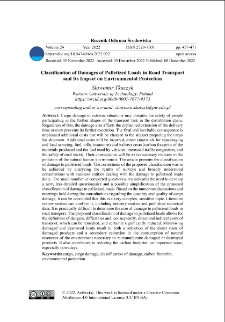Biblioteka Cyfrowa Politechniki Koszalińskiej contains 2 003 digital objects
Object
Title: Classification of damages of palletized loads in road transport and its impact on environmental protection
Alternative title:
Description:
Place of publishing:
Publisher:
Identifier:
oai:dlibra.tu.koszalin.pl:1927
Language:
Is part of:
Rocznik Ochrona Środowiska. Vol. 24, s. 457-471
Rights:
Biblioteka Politechniki Koszalińskiej
Access rights:
License:
Object collections:
- Digital Library - Koszalin University of Technology > Open Access
- Digital Library - Koszalin University of Technology > Journals > Rocznik Ochrona Środowiska > Vol.24
Last modified:
Sep 16, 2024
In our library since:
Sep 16, 2024
Number of object content hits:
51
All available object's versions:
https://dlibra.tu.koszalin.pl/publication/1935
Show description in RDF format:
Show description in OAI-PMH format:
Objects Similar
Tkaczyk, Sławomir
Rahman, Mahfujur Chowdhury, Shanjida Zayed, Nurul Mohammad Imran, Ali Hanzhurenko, Iryna Nitsenko, Vitalii
Zając, Paweł Ejdys, Stanisław Balicki, Piotr
Buribayev, Yermek Khamzina, Zhanna Zhumagulov, Bolat Zhangutin, Baurzhan Daubassov, Sabit
Janicka, Anna Molska, Justyna Świeściak, Joanna Włostowski, Radosław Włóka, Adriana Zawiślak, Maciej
Zając, Paweł Poznański, Jarosław
Tomasz Zubala
Végsöová, Oľga Straka, Martin Kyšeľa, Kamil


